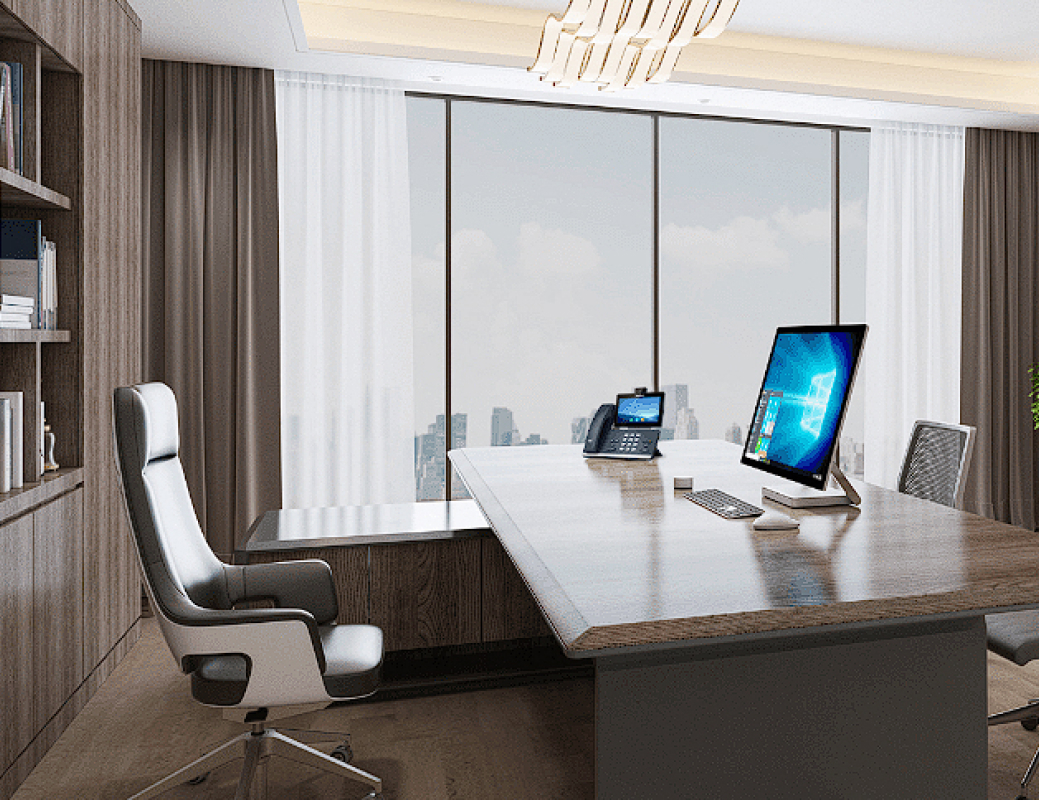Introduction
Welcome to the future of communication! With technology evolving at a dizzying pace, video conferencing has become an essential part of our daily interactions, whether it's for business meetings, family gatherings, or virtual events. If you're wondering how to harness the power of video conferencing through your VoIP phone system, you've landed in the right place.
In this extensive guide, we're diving deep into the ins and outs of utilizing video conferencing features embedded within your VoIP phone system. From understanding what VoIP is to exploring advanced features that can enhance your experience, we aim to equip you with all the knowledge needed to make the most of these technological wonders.
So grab your favorite beverage and settle in as we unravel the myriad possibilities that come with integrating video conferencing into your VoIP setup!
What is a VoIP Phone System?
Understanding VoIP Technology
Voice over Internet Protocol (VoIP) is a game-changer in telecommunications. It allows users to make voice calls using a broadband internet connection instead of traditional telephone lines. Imagine chatting with someone halfway across the globe at virtually no cost—it's not magic; it's just smart technology!
The Rise of VoIP Phone Systems
With businesses increasingly leaning towards remote work and global collaboration, VoIP phone systems have surged in popularity. They offer flexibility, scalability, and advanced features that traditional phone systems simply can't match.
Why Choose a VoIP Phone System?
- Cost-Effective: Say goodbye to hefty phone bills. Flexibility: Work from anywhere with internet access. Advanced Features: Enjoy call forwarding, voicemail-to-email, and yes—video conferencing.
How Does Video Conferencing Work with VoIP?
The Technical Backbone
Video conferencing works by transmitting audio and visual data over an IP network. When you use a VoIP phone system equipped with video capabilities, you're essentially turning your regular calls into face-to-face meetings without leaving your desk!
Key Components Needed for Video Conferencing
To get started with video conferencing on your VoIP phone system, you'll need:
A reliable internet connection A compatible device (PC, smartphone, or dedicated conference room equipment) Video conferencing software or integrated features within your VoIP systemSetting Up Video Conferencing on Your VoIP Phone System
Step-by-Step Setup Guide
Getting started is easier than pie! Follow these simple steps:
Choose Your Software: Determine which video conferencing tool integrates best with your VoIP system. Install Necessary Applications: Download any required apps or plugins. Create User Accounts: Set up user profiles for everyone who will be participating. Test Your Equipment: Ensure microphones, cameras, and speakers are functioning correctly.Testing Your Setup Before Meetings
Don't wait until the meeting starts to find out something's wrong! Schedule test runs to ensure everything’s working smoothly.
How to Utilize Video Conferencing Features of Your VoIP Phone System
Now that we've got our tech all sorted out let’s explore how you can utilize those nifty video conferencing features effectively!
Scheduling Meetings Like a Pro
Use calendar integrations available in many VoIP systems to schedule meetings seamlessly. This feature often sends automatic reminders—a lifesaver when you're juggling multiple tasks!
Screen Sharing Made Simple
One powerful feature is screen sharing. You can present documents, slide shows, or even conduct live demos during a call—perfect for collaborative brainstorming sessions.
Interactive Tools for Engagement
Utilize chat functions and polling tools within your video calls to keep everyone engaged. Who doesn’t love a good poll?
Best Practices for Effective Video Conferencing on Your VoIP Phone System
1. Prepare Ahead of Time
Preparation is crucial! Make sure you have all materials ready and tested before the call begins.
2. Maintain Professionalism
Even if you're working from home in pajamas (we won't tell), maintain professionalism during calls—dress appropriately and choose tidy backgrounds.
3. Be Mindful of Time Zones
When scheduling meetings across different time zones, always check local times so nobody feels left out or groggy!
Advanced Features in Modern VoIP Phone Systems for Video Conferencing
Many modern systems come packed with advanced features that can elevate your video conference experience:
https://ameblo.jp/jaidenfgps072/entry-12879113776.html Virtual Backgrounds: Keep it professional while hiding that messy room! Recording Functions: Capture important meetings for future reference. AI-Powered Transcriptions: Get automatic transcripts of conversations—great for documentation.Troubleshooting Common Issues During Video Conferences
Even the best-laid plans can go awry sometimes! Here’s how to tackle common issues:
1. Poor Audio Quality
Check microphone settings and ensure there’s no background noise interfering with communication.
2. Connection Drops
A stable internet connection is vital! Have backup options ready like mobile data or Wi-Fi hotspots.
3. Camera Not Working
If participants can't see you (or vice versa), double-check camera connections or app permissions.
Integrating Video Conferencing into Daily Operations Using Your VoIP Phone System
Incorporating video calls into daily routines can streamline workflows significantly:
- Team Meetings
Replace long email threads with quick face-to-face discussions.
- Client Consultations
Build stronger relationships by talking to clients directly rather than through emails alone.
- Training Sessions
Deliver training more engagingly via interactive video conferences instead of boring presentations!
FAQs about Utilizing Video Conferencing Features in Your VoIP Phone System
1. Can I use my smartphone for video conferences?
Absolutely! Many modern VoIP phone systems have mobile apps allowing seamless connectivity from smartphones.
2. What if my internet goes down during a meeting?
Have fallback plans like using mobile data or switching back to standard voice calling if needed.
3. Are there security risks associated with video conferencing?
While there are risks like unauthorized access, most reputable services offer security features like password protection and encryption.
4. Can I record my meetings?
Yes! Most platforms provide recording functionalities; just remember to inform participants beforehand!
5. Do I need special hardware for high-quality video calls?
While high-end cameras improve quality, most built-in webcams are sufficient for standard usage—just ensure proper lighting!


6. How do I switch between audio-only and video modes during a call?
Most platforms allow toggling between modes easily during an active session; look for buttons typically labeled "Mute" or "Video On/Off."
Conclusion
As we've explored throughout this article on “How to Utilize Video Conferencing Features of Your VoIP Phone System,” it’s clear that embracing technology can vastly improve communication efficiency both personally and professionally!
From understanding basic setup procedures to leveraging advanced features tailored just for you—there's no question that integrating video conferencing into your existing workflows will pay dividends in productivity levels while creating opportunities for meaningful connections across distances.
So why wait? Dive into those settings today and unleash the full potential of your VoIP phone system's capabilities! Happy conferencing!